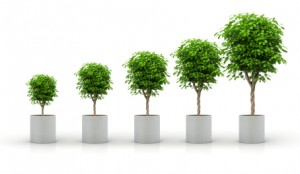 I about came out of my shoes when I saw that our sales gamification app had climbed up to be the #1 most popular gamification app on the Salesforce AppExchange and the 31st most popular app (out of over 1,400, putting us in the top 2%). Only 12 months ago this was just a sparkle in my eye, and it was only 9 months ago that the product was born.
I about came out of my shoes when I saw that our sales gamification app had climbed up to be the #1 most popular gamification app on the Salesforce AppExchange and the 31st most popular app (out of over 1,400, putting us in the top 2%). Only 12 months ago this was just a sparkle in my eye, and it was only 9 months ago that the product was born.
This concept of applying gamification to motivate employees is on the rise, and it’s been fun to be right in the middle of it. From the start, our focus has been specifically on motivating salespeople. I’ve spent the last 18 years in front line sales, as a sales manager, and in sales operations. So when we designed this product, it was based on a deep understanding of how a sales manager and how salespeople tick. Gamification is a big category, and we’ve chosen to focus on sales – at least to start.
Over the past year, I’ve talked with hundreds of people about applying gamification to a sales environment. Following are a few things I’ve picked up along the way, which shows why this concept is gaining steam.
Salespeople are Competitive by Nature
Someone once told me the best way to assess someone’s competitiveness is to ask them, “What emotion is more intense for you – winning or losing?” The most competitive will quickly respond and tell you that losing creates a drastically more intense emotion. Salespeople love to win, but they hate – and I mean despise – losing. Sales managers, most all of whom are former salespeople, understand this and regularly use sales contests to create some energy around a certain behavior. With more sales organizations using sales CRM systems like Salesforce, they are empowered with many more activities that can be measured – and if you can measure it, you can motivate it.
Sales Managers Like to Keep Things Simple
While sales contests are the oldest idea in the book, they are known to be a huge pain to manage. Even companies that use CRM systems keep track of results on whiteboards and in spreadsheets that get updated and emailed out to people manually. Gamification apps that can plug into sales CRM systems can remove this burden and make things really easy. The manager tells the software the behavior they want to motivate, and the rewarding and status updates happen automatically.
There is Always Something to Motivate
Sales teams lay out their annual comp plans to get salespeople focused on closing sales and hitting their sales quotas – and that’s exactly what they should be focused on. However, there are always times throughout the year, or even within a given month, that a sales manager needs to motivate some key behavior to drive the business. It could be taking a new product to market, to book more meetings in a given week, to make more calls one morning, or to add an extra push to close business when sales are slow. Easy-to-use gamification tools are a way to create some energy and focus around those needed behaviors.
CRM Adoption Generally Sucks
We ran a LinkedIn poll recently that received 150+ responses and learned that over 50% of sales managers say their salespeople don’t use the company’s CRM system like they want them to. This is a huge issue because CRM systems are expensive – a 100-person sales team is likely spending $200,000+ for their sales CRM tool and the surrounding needs. When salespeople aren’t using it, or aren’t using it correctly, that’s money right down the drain.
This tends to create some emotion of its own to the sales manager, which then results in what you would call the “stick” approach to driving adoption – use it or else! Companies who use Salesforce have likely heard the suggested line, “If it’s not in Salesforce, it doesn’t exist!” While true, that doesn’t exactly rally the sales team. Adding some competition and rewards to the process are a great way to make using the CRM system more interesting and fun. Managers identify the key behaviors they want to motivate or want to get entered into the system, create a little competition around it (e.g., 1 point for every meeting logged, 3 points every time you progress the sales stage of an opportunity), and suddenly the salespeople get behind it.




I would like to talk to a sales rep.
Thanks for the note, Eugenio. Justin from our team will reach out to you.